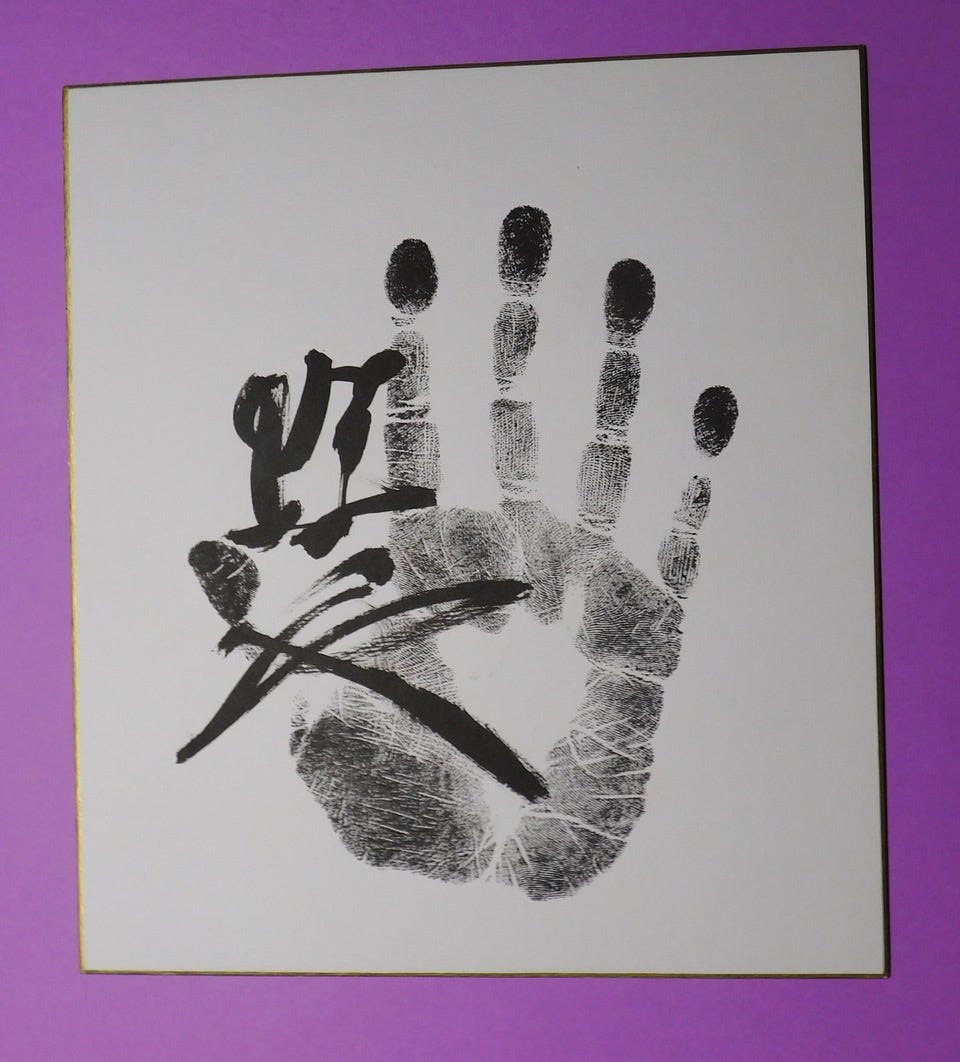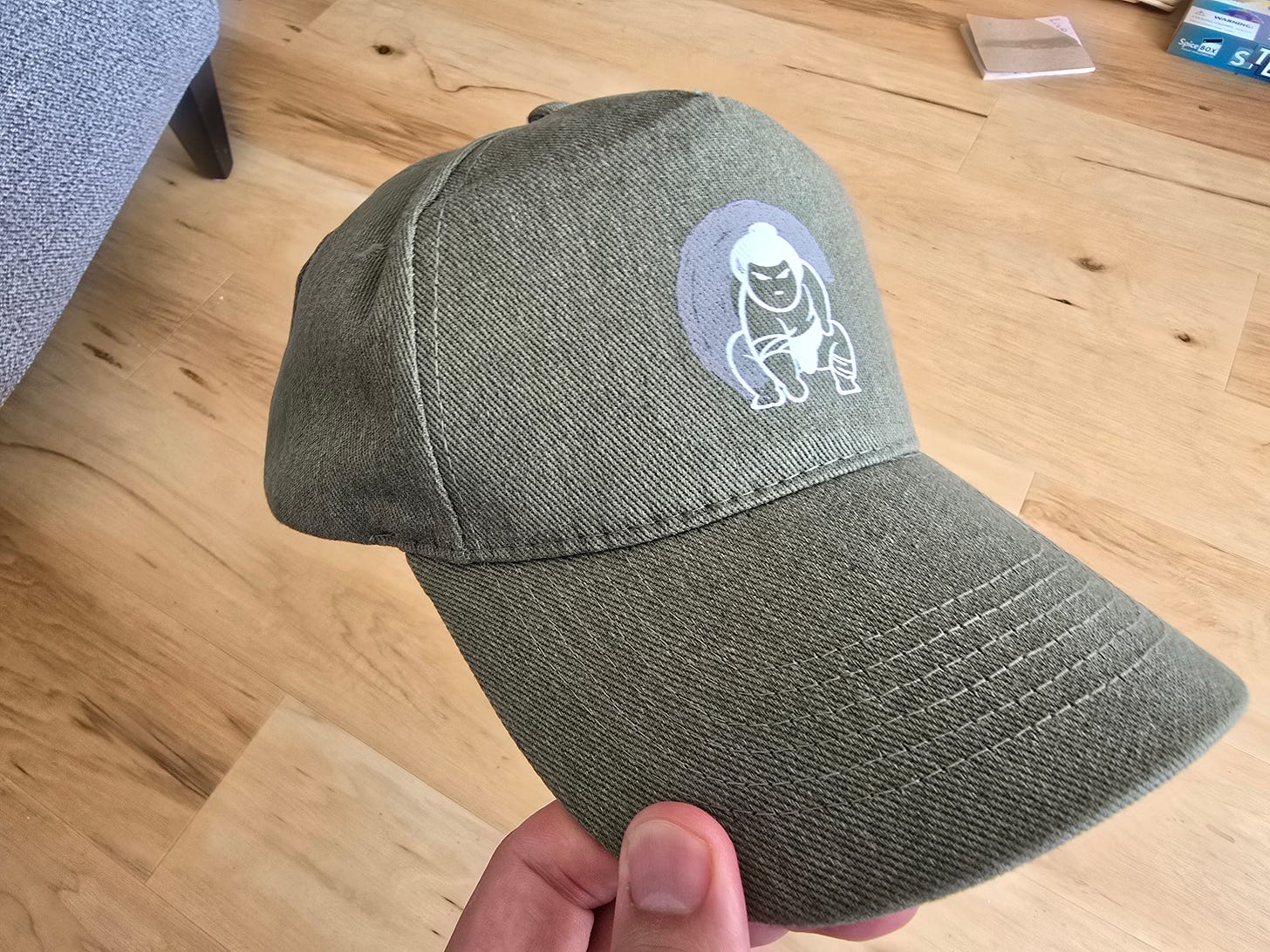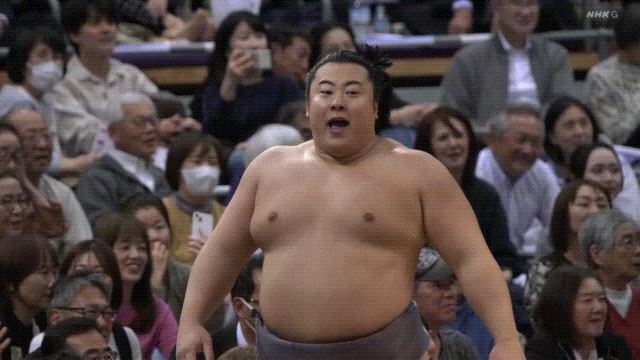Report Card: 2025 Natsu Basho - Part 4
Continuing to grade the top division rikishi who were involved in the May. tournament.
The Nagoya basho will be here soon, but there are still two report cards I need to get out covering the May tournament (stop me if you’ve heard that before). To ensure that everything gets out before Nagoya (and to give me room to write a predictions post), I’m going to try and be more concise in these reports.
I’ve dabbled with writing short report cards in the past. If I could stick to that, things would definitely be easier on my end. I just can’t help going into details when I get excited about certain rikishi and/or their sumō. A lot of these reports are taken up by technique breakdowns. That’s the slippery slope for me. When I start writing about a technique I find it very hard to stop and that’s when I tend to get long-winded and these report cards balloon in size.
I’m wondering if, with report cards, I need to focus more on the vibe, context and narrative of a wrestler’s tournament and not go on such deep dives on how wrestler A uses their hidari-yotsu and how wrestler B could improve their hazuoshi. I write a lot about technique in the daily tournament updates as we recap specific match-ups. Maybe that should be the home for that kind of talk.
Then, these report cards can be more about generalized impressions on how a wrestler performed over 15 days and what was at stake for them.
I’ll try that here and see how it feels.
This is a good report card to try it on, too. I’m covering maegashira 6 to maegashira 1. There weren’t many performances among this group worthy of a lot of praise or detailed technique analysis. Among those twelve wrestlers there was just one kachi-koshi (winning record)!
The group I’m looking at today includes Tobizaru, Ōshōma, Chiyoshōma, Ura, Ichiyamamoto, Takerufuji, Hiradoumi, Tamawashi, Gōnoyama, Abi, Ōhō and Wakamotoharu.
This is a premium post. The free preview will cut off in the Abi section. If you’d like to read to the whole piece (and gain access to the archives), you’ll need a paid subscription (which are set as cheap as possible here on Substack).
Paid subscribers this month will be entered into a special prize draw to win an Ichinojo tegata courtesy of TegataStore.com (link).
This is the third tegata giveaway I’ve done and so far the winners have been delighted with their prizes. So sign up today for a chance to win one for yourself!
Paid subscriptions are not the only way to support Sumo Stomp!, though. I’ve got a merch store, too. I’ve got t-shirts, hoodies, mugs and stickers up for sale. I’ve also got these cool baseball caps. These are made from 50% recycled cotton and 50% recycled polyester. I intentionally went with a merchandise vendor that creates high quality, sustainable products. Because of that… I don’t make much profit on these at all! So, the more I sell the better.
All paid subscribers get 15% off all purchases in the merch store. Scroll down to the bottom of this post to get that discount code (please don’t share it!)
Another way to help me out is subscribing to me on YouTube. If everyone here did that I would be able to monetize the channel. Then I could gain passive income through YouTube and invest that back into the blog. Here’s the latest video I posted there:
Lastly, our bonus gif today is that cheeky chappy Tobizaru.
Right now Tobi!
Tobizaru
Rank: Maegashira 6 West
Record: 7-8
Grade: C-
Tobizaru got his third make-koshi (losing record) in a row. His other losing records were 6-9 and 7-8 while in the jōi (ranks M1-4). In May Tobizaru was the lowest he’d been ranked since 2022. We’re seeing Tobizaru’s decline at the moment, but it’s been pretty subtle. He turned 33 just before this tournament and, despite not being in the jōi, M6 threw a lot of tough opponents his way (Aonishiki, Ōnokatsu, Hakuōhō, Meisei, Kinbōzan). Despite him being past his best, and despite his tough schedule in May, he was just one win away from kachi-koshi. His barrier to getting that winning record was a final day bout with Wakatakakage. I think this was an odd match to make, considering you also had Kayo on a 7-7 record. Tobizaru ended up being no match for Wakatakakage, who was on a tear that month.
I can forgive him dropping that bout and I think 7-8, at this point in his career, is a decent performance (hence my generous grade). And even though he finished with a losing record, Tobizaru fought with lots of spirit in May, continuing to use his guile and his bite to compensate for his lack of size.
His tachiai was a little weird, though.
He was trying to do some kind of stutter-step and then an ankle/knee pick. It didn’t work. I don’t know if this was a tactical choice or if he was trying to protect an injured part of his body in the tachiai.
Ōshōma
Rank: Maegashira 6 East
Record: 10-5
Grade: B
Ōshōma banked the result of his career in May, getting double digits for the third time in his makuuchi career. He was ranked M14 and M9 the last time he went 10-5. This result secured a debut spot in the san’yaku for the Mongolian. He’s komusubi in Nagoya. He went 2-3 against opponents ranked M4 and above. This included a loss in his first ever bout with Kirishima and a win in his first ever bout with Abi. The win over Abi was especially exciting and almost made me forget what a chore a lot of Ōshōma’s sumō had been to get through leading up to that point.
Ōshōma’s sumo was very negative and cautious and in May, as we’ve come to expect from him. He got most of his wins by sneaking around his opponents and pushing them out from behind. His style is not my cup of tea and in May I found myself rooting for his opponents more ardently than I typically do. Even so, he deserves his promotion. And I’m keen to see if his style can keep him afloat up there (I have my doubts).
Chiyoshōma
Rank: Maegashira 5 West
Record: 4-11
Grade: E
Chiyoshōma’s 11-4 in November was a fluke and he’s been paying for it ever since. That pushed him up to M5 in January. He won his first seven bouts in January to help him get a 9-6 record. But he’s been pretty bad since the second half of that tournament and has looked totally over-matched at M2 and now M5. His wins in May were against Churanoumi, Ōnokatsu, Gōnoyama and Shōdai. Ōnokatsu had a good tournament, going 10-5. But the other three had a combined 14-31 record. Chiyoshōma tried all his tricks, trips and throws (even attempted a low kick on Ichiyamamoto), but everything looked very haphazard and jittery to the point he looked like he was on roller skates during some bouts. There were also a couple of losses where he stepped out of bounds, showing poor focus and ring awareness.
See below how he missed a henka on Takayasu (his second missed henka of the tournament) and then stepped out of bounds. Apologies on the video quality, the official JSA channel doesn’t have this bout. Seeing a bout from the crowd POV has its charm, though.
Ura
Rank: Maegashira 5 East
Record: 5-10
Grade: D+
This losing record was Ura’s fourth losing record in a row. He’s only managed four kachi-koshi in the last fifteen basho. That’s pretty absurd, on paper. Ura is not really playing for wins, though. He’s playing for highlights. I think he’s satisfied if he manages to stay close enough to a winning record, while also pulling off something to add to his career highlight reel. He’s been pretty good at that over this stretch and he’s also been operating at a high level for a lot of that time, too (ten out of those fifteen tournaments saw him ranked M4 or higher). Still, in May, it’s hard to excuse ten losses, even with Ura hitting the tsutaezori on Takayasu (which went pretty viral online).
That tsutaezori (under arm forward body drop) is what graduated Ura from a D to a D+ in my books. That bout will be replayed for years to come, unlike 90% of whatever else happened in this tournament. That’s the game Ura wants to play and he succeeded this time around. We’re starting to get more tournaments, though, where Ura misses on all these spectacular moves and finishes with a poor record.
Ichiyamamoto
Rank: Maegashira 4 West
Record: 5-10
Grade: D-
Ichiyamamoto had looked much improved since his jūryō stint in 2023. However, this year, he’s shown us that—despite all that improvement—he’s just not jōi (M1-4) material. His 5-10 here comes after he went 7-8 in March (albeit with a kinboshi). In May he went 0-5 against the upper ranked wrestlers, which included his first career loss to Hōshōryū (someone he had a 3-0 record against). There’s a reason we rarely see wrestlers with this style of sumō occupy these high rankings in makuuchi. Abi has been the best at it, but he stalled out at sekiwake and seems unlikely to get back there. Ichiyamamoto doesn’t have Abi’s size, so it’s very hard for him to back down the kind of wrestlers he encounters at these high positions. In May he wasn’t strong enough to propel his elite opponents into open space. This meant they were able to stay in his grill and force him to grapple (which he’s not comfortable with) or pull him down.
That’s what happened against Kotozakura.
Takerufuji
Rank: Maegashira 4 East
Record: 6-9
Grade: D
In May Takerufuji looked ordinary for the first time in his makuuchi career. Not counting his injury hit 0-0-15 and 2-1-12, this is Takerufuji’s first losing record of his young career (18 basho). In May Takerufuji struggled with the duties one gets in the jōi; facing a murderer’s row of opponents in the first week of the competition. He got off to a good start, beating Hiradoumi, Ura and Ichiyamamoto, but then things got much harder for him. After those three bouts he was drawn against Wakatakakage, Abi, Kotozakura, Ōnosato, Hōshōryū and Kirishima. And he lost every bout. Those six losses in a row put his back against the wall and the make-koshi was confirmed with losses a few days later to Daieishō and Takayasu. Those losses meant he was 0-7 against the upper rankers.
Takerufuji is best known for his blitzing tachiai. In May most of his wins came by hitting hard off the tachiai and securing quick yorikiri (frontal force out). Against the best wrestlers, though, he wasn’t able to move them back off the tachiai and was then left wanting when trying to figure out what to do next.
Some of the elites, like Ōnosato, Hōshōryū and Kirishima, also used his forwards momentum against him, securing slap downs or throws.
Takerufuji did experiment with angling off on the tachiai, but he wasn’t able to score wins like that. Takerufuji feels like a wrestler who is trying to add diversity to his sumō. I just don’t think he’s figured out what that should look like yet.
Hiradoumi
Rank: Maegashira 3 West
Record: 6-9
Grade: D
Hiradoumi looked quite comfortable in the jōi and komusubi rank during his first stops in those positions last year. However, lately he’s struggled every time he gets past M6. He’s still only 25, so he has plenty of time left to improve. However, his sumō relies a lot on activity and energy and as he gets older his reserves of energy will start to deplete. Hiradoumi does best when he attacks at a mile minute, firing thrusts at his opponents to get inside and then thrashing them around in the clinch (like his stablemate Sadanoumi does). He got a few wins like that in May, like this one over Ura.
In May he was also able to score a couple of quick wins off the tachiai, pulling down Ichiyamamoto and Daieishō immediately.
He tried that little pull down move on Hōshōryū, too. However, Hōshōryū saw it coming and was able to lock him up. Once he had Hiradoumi under control, Hōshōryū was able to put him down with relative ease. Often, in May, when wrestlers forced Hiradoumi to fight slow like this, they were able to bring him down.
Tamawashi
Rank: Maegashira 3 East
Record: 6-9
Grade: D+
In May Tamawashi was fighting at his highest rank since the 2023 aki basho (where he was also M3). At that tournament he went 2-13, losing his first eleven bouts. Improving on that record, despite being almost two years older, is a decent achievement and worthy of a slightly friendly grade. In this tournament Tamawashi faced his stiffest opposition for a while. This marked the first time he faced a yokozuna since 2022 (when he got one of his wins over Terunofuji). In May he fought both Hōshōryū and yokozuna-in-waiting Ōnosato. He was pushed out quickly by both of them. But you can forgive him for that. He can still do a lot of things at 40 (much more than I can), but he’s not strong enough to back those guys down with his nodowa (throat thrust). There’s plenty of other young wrestlers he can still bully around, though. See how he held up and then pushed down Gōnoyama, below.
Gōnoyama
Rank: Maegashira 2 West
Record: 4-11
Grade: E
Speaking of Gōnoyama, May marked his worst ever record. This 4-11 came largely thanks to a terrible start to the basho where he went 0-6. Among those first six opponents were both sekiwake, the yokozuna, Ōnosato and the highly ranked Tamawashi and Takayasu. That’s a tough opening week. But Gōnoyama does have wins against all those opponents. In May his wins were pretty good ones. He beat Kotozakura, Hiradoumi, Ōhō and Tobizaru.
Because of those wins, I don’t think this record is indicative of Gōnoyama being over-ranked. I think he just had a bad tournament. I do think he has potential to crack the san’yaku, but that belief is starting to wane. He turned 27 in April and he really needs to show he can get over the hump soon or he’ll be doomed to topping out at the jōi, a spot which hands out lots of beatings and very little praise.
Abi
Rank: Maegashira 2 East
Record: 7-8, kinboshi
Grade: C-
Abi got his third make-koshi in a row in May. The previous two were while ranked komusubi. His record against higher ranked opposition in May is what gives him a rare C grade on a losing record. He beat Hōshōryū, Ōhō, Takayasu, Wakatakakage and Wakamotoharu with his usual bag of tricks. That’s a bag of tricks that everyone knows is coming, but sometimes just can’t seem to stop. The win over Hōshōryū was especially violent.
Keep reading with a 7-day free trial
Subscribe to Sumo Stomp! to keep reading this post and get 7 days of free access to the full post archives.





